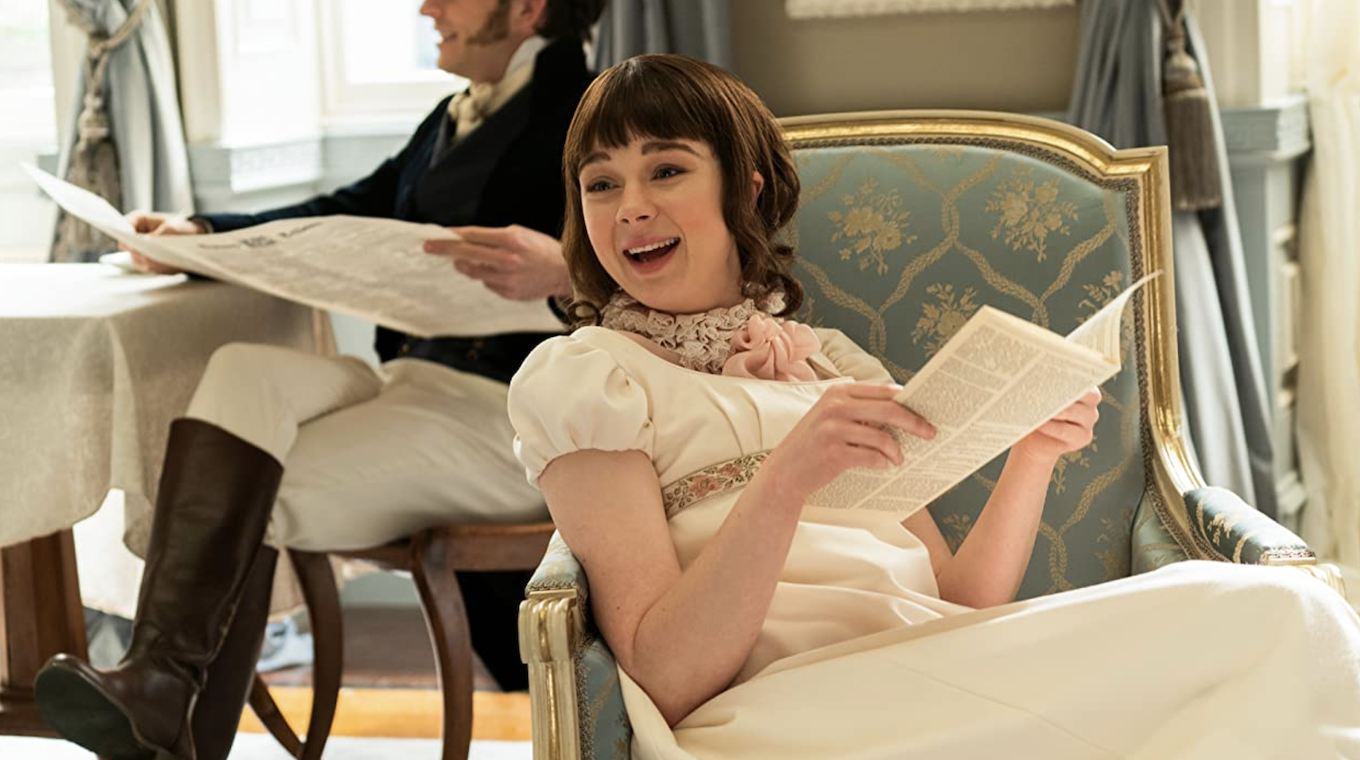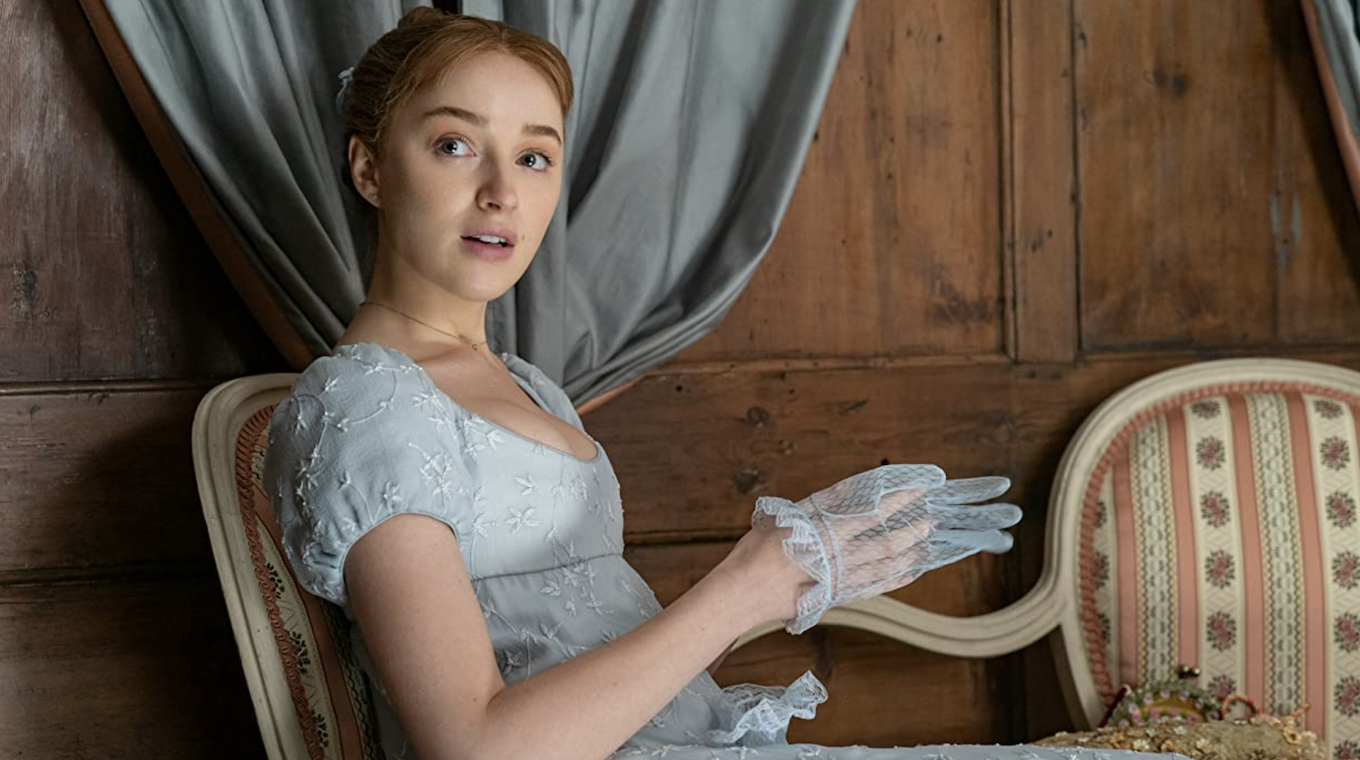Netflix's new Regency era romance show Bridgerton has taken the streaming site by storm. It's already on pace to be of Netflix's top five most watched shows with 63 million viewers in its first few weeks on the platform. The series comes to us from executive producer Shonda Rhimes, who is known for her popular series like Scandal, Grey's Anatomy, and How to Get Away With Murder. Similar to the ways those shows pull from real life happenings at times, Bridgerton mixes real history with fiction for a hybrid take on the Regency period of the early 1800s.
Because it is first and foremost a drama, though, not everything is completely accurate to the time period. As media outlets like the Chicago Tribune and the Daily Mail have noted, while the show gets some things right, it also took creative liberties in many ways. Here's what fans need to know about what it gets right and what it alters when it comes to the Regency era.
It's Based on a Book Series
Before Bridgerton became a Netflix series, it was a book series written by Julia Quinn. The eight-book series first came out in 2000 and followed the children of Viscount Bridgerton from 1813 to 1827. Julia said on her website that she originally only wanted to write a trilogy, but she expanded to eight books when people wanted the story to continue.
And the Family Isn't Real
The core characters that Bridgerton follows — members of the Bridgerton family — are fictional. That's a major way the series departs from reality. In much the same way the Bennet family was fictional in Pride and Prejudice, the Bridgertons act as a way to dive into the Regency era without having to stick too closely to the truth of any one particular person.
Queen Charlotte Really Existed, Though
One of the only real characters in the series is Queen Charlotte. She was married to King George III who ruled from 1760 to 1820. In Bridgerton, Charlotte is played by biracial actress Golda Rosheuvel, which may be true to history. Many historians believe Charlotte was also biracial.
It's More Diverse Than Many Period Dramas

Bridgerton puts several Black characters front and center in high society, unlike most period dramas, which are overwhelmingly white. According to Oprah magazine, there were some Black members of nobility, but they weren't as easily accepted as the characters in Bridgerton are.
However, Bridgerton actor Regé-Jean Page told the magazine that they were trying to make a more modern period piece. "I like to represent the world we live in, the audience we're serving, and people who have always lived," he said. "It's not like people of color existing is a modern phenomenon. We've always been there, we are here, and we're gonna be there."
There Really Were Gossip Columns

So-called "scandal sheets" of gossip about high-society members started as early as the 1700s. "Newspapers were plentiful during the Regency Era, with most of the stories published centering on politics, crime, fashion, infidelity, or royal doings,” historian Geri Walton told Town & Country. "I think any story that might stir up controversy and increase readership was covered by the press at the time. I'm also sure there were rumors and gossip about debutantes. The newspapers did focus on aristocrats and wealthy socialites.”
But the Clothing Wasn't That Over the Top
Costume designer Ellen Mirojnick told Express that she did research about Regency era clothing, but then she turned the dial up to 11. "We kept the style and silhouette of 1813 for the most part but how 1813 is shaken up and turned on its head is by using more modern fabrics and more modern techniques." For example, some of the bright yellows and pinks would not really have been worn back then.
Courting Was a Lengthy Process
According to the Los Angeles Times, the six-month courting season depicted in Bridgerton is rooted in reality. Historical consultant Hannah Greig told the outlet that the season included balls, concerts, and dinners as young men and women got to know each other. And yes, each season did start with an introduction of eligible bachelorettes to Queen Charlotte. The tradition continued until Queen Elizabeth II stopped it in 1958.
Sex Education Was Nonexistent

Many of the women in Bridgerton have no idea about sex or how babies are made. That's an accurate depiction of the time. "There would have been nothing in the way of formal sex education," historian Lesley A. Hall told the Chicago Tribune. "Mothers might have given some premarital counsel to daughters."
But Maids Knew More

Historian Amanda Vickery told the Tribune that it would have been accurate that Daphne's maid Rose would have been more aware of intimacy. "Amongst the laboring poor, premarital sex was a common and accepted part of advanced courtship," Vickery said. "A high proportion of ordinary brides were pregnant on their wedding day. The servants would likely be much more experienced."
IRL, Simon Would Have Wanted Kids
Amanda Vickery also told the Tribune that Simon's Bridgerton storyline about not wanting children was pretty inaccurate. "Noble men married to secure the dynasty. A peer determined not to have children would be absurd," she said. This is one of the largest ways that the series departs from the reality of the time.
Dueling Was Legal, But Become Illegal
The actual banning of duels happened a little bit after the events of Bridgerton, but duels were eventually outlawed. The change came in 1844 when the Articles of War were revised to make sending or accepting a dueling challenge against the law.
Since Anthony and Simon's duel took place a couple of decades before the change, they would have been allowed to fight.
Everyone Was Using Snuff

In the series, Queen Charlotte is frequently sniffing tobacco known as "snuff." It was a popular activity in the Regency era for the upper class, and people even had intricate decorated snuff boxes to house their product. Charlotte was nicknamed "Snuffy Charlotte" for her fondness of the stuff.
Pregnancy Wasn't Always Eagerly Embraced

Daphne really wants to get pregnant in Bridgerton, despite the potential risks that labor came with in those days. Amanda told the Tribune that most young women would have been less desperate to give birth. Pregnancy was "both welcomed and feared," the historian said. Childbirth came with a 20% mortality rate for the moms during this period of time.
The Soundtrack is Very Inaccurate
One major way that the series was updated for modern viewers was through the music. Instrumental covers of pop songs like Ariana Grande's "Thank U Next" and Billie Eilish's "Bad Guy" were used throughout the show.
Showrunner Chris Van Dusen told Oprah magazine, "The music for us was kind of an evolution we found when making the show as the cuts were coming in," he said. "It really goes to the idea of making this feel different than your other period shows."
It Wasn't Meant To Be 100% Accurate
As the costume designer told Tatler, "The point was to take that Regency period as a foundation, and not betray it in any way, but we didn't want to make it a history lesson." And so the show pulls from the era when convenient, but also makes it more modern in many ways. And the combo seems to be working for fans.




